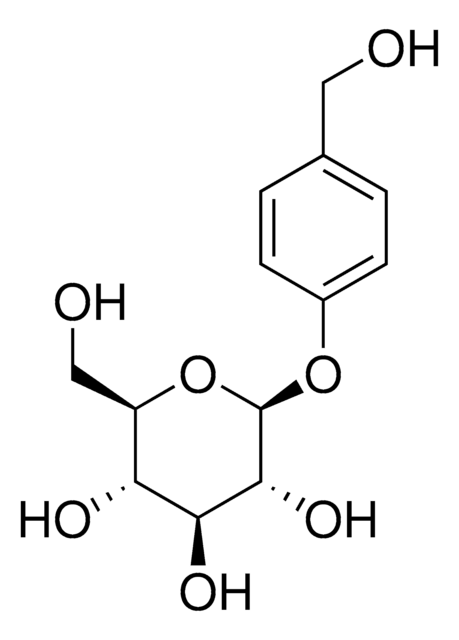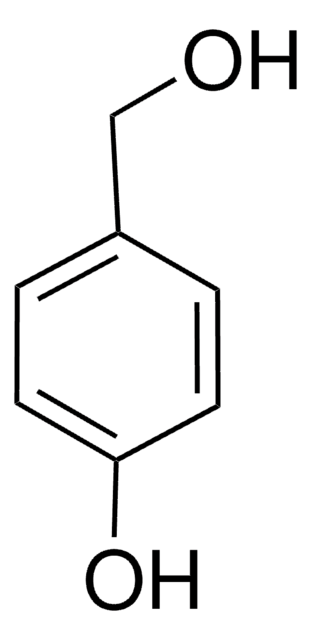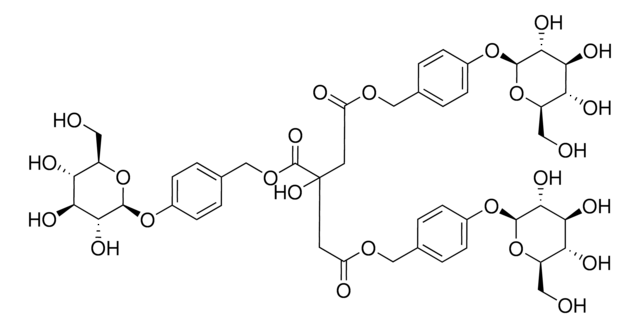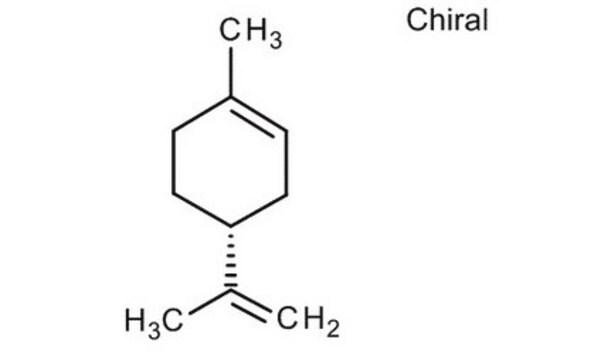Kluczowe dokumenty
SMB00313
Gastrodin
≥98% (HPLC)
Synonim(y):
(2R,3S,4S,5R,6S)-2-Hydroxymethyl-6-(4-hydroxymethyl-phenoxy)-tetrahydro-pyran-3,4,5-triol, 4-β-D-glucopyranosyloxybenzyl alcohol, 4-Hydroxybenzyl alcohol 4-O-β-D-glucoside
About This Item
Polecane produkty
pochodzenie biologiczne
plant (Gastrodia elata Blume)
Poziom jakości
Próba
≥98% (HPLC)
Formularz
powder
Zastosowanie
detection
metabolomics
vitamins, nutraceuticals, and natural products
temp. przechowywania
2-8°C
ciąg SMILES
O[C@@H]1[C@@H](CO)O[C@@H](OC2=CC=C(CO)C=C2)[C@H](O)[C@H]1O
InChI
1S/C13H18O7/c14-5-7-1-3-8(4-2-7)19-13-12(18)11(17)10(16)9(6-15)20-13/h1-4,9-18H,5-6H2/t9-,10-,11+,12-,13-/m1/s1
Klucz InChI
PUQSUZTXKPLAPR-UJPOAAIJSA-N
Szukasz podobnych produktów? Odwiedź Przewodnik dotyczący porównywania produktów
Powiązane kategorie
Opis ogólny
Zastosowanie
Działania biochem./fizjol.
Hasło ostrzegawcze
Warning
Zwroty wskazujące rodzaj zagrożenia
Zwroty wskazujące środki ostrożności
Klasyfikacja zagrożeń
Acute Tox. 4 Oral
Kod klasy składowania
11 - Combustible Solids
Klasa zagrożenia wodnego (WGK)
WGK 3
Temperatura zapłonu (°F)
Not applicable
Temperatura zapłonu (°C)
Not applicable
Wybierz jedną z najnowszych wersji:
Certyfikaty analizy (CoA)
Nie widzisz odpowiedniej wersji?
Jeśli potrzebujesz konkretnej wersji, możesz wyszukać konkretny certyfikat według numeru partii lub serii.
Masz już ten produkt?
Dokumenty związane z niedawno zakupionymi produktami zostały zamieszczone w Bibliotece dokumentów.
Nasz zespół naukowców ma doświadczenie we wszystkich obszarach badań, w tym w naukach przyrodniczych, materiałoznawstwie, syntezie chemicznej, chromatografii, analityce i wielu innych dziedzinach.
Skontaktuj się z zespołem ds. pomocy technicznej







